Design Options for Sustainable and Open Business Models: A Taxonomy-Based Analysis
Abstract
1. Introduction
2. Materials and Methods
2.1. Phase 1: Structured Literature Review
2.2. Phase 2: Taxonomy Building for OBM, SBM and SOBM
2.3. Phase 3: Synthesis and Interpretation of SOBM(f)
2.4. Phase 4: Taxonomy Evaluation
3. Results: Design Options for SOBM
3.1. MD of SOBM(f)
3.1.1. MD1: Value Creation
3.1.2. MD2: Value Proposition
3.1.3. MD3: Value Delivery
3.1.4. MD4: Value Capture
3.2. Evaluation of SOBM(f)
4. Discussion and Conclusions
Author Contributions
Funding
Institutional Review Board Statement
Informed Consent Statement
Data Availability Statement
Conflicts of Interest
Appendix A. Details of the Structured Literature Review

Appendix B. Taxonomy Development of OBM and SBM
Appendix C. Illustration of Merging Steps 1–3 According to the Business Model Components

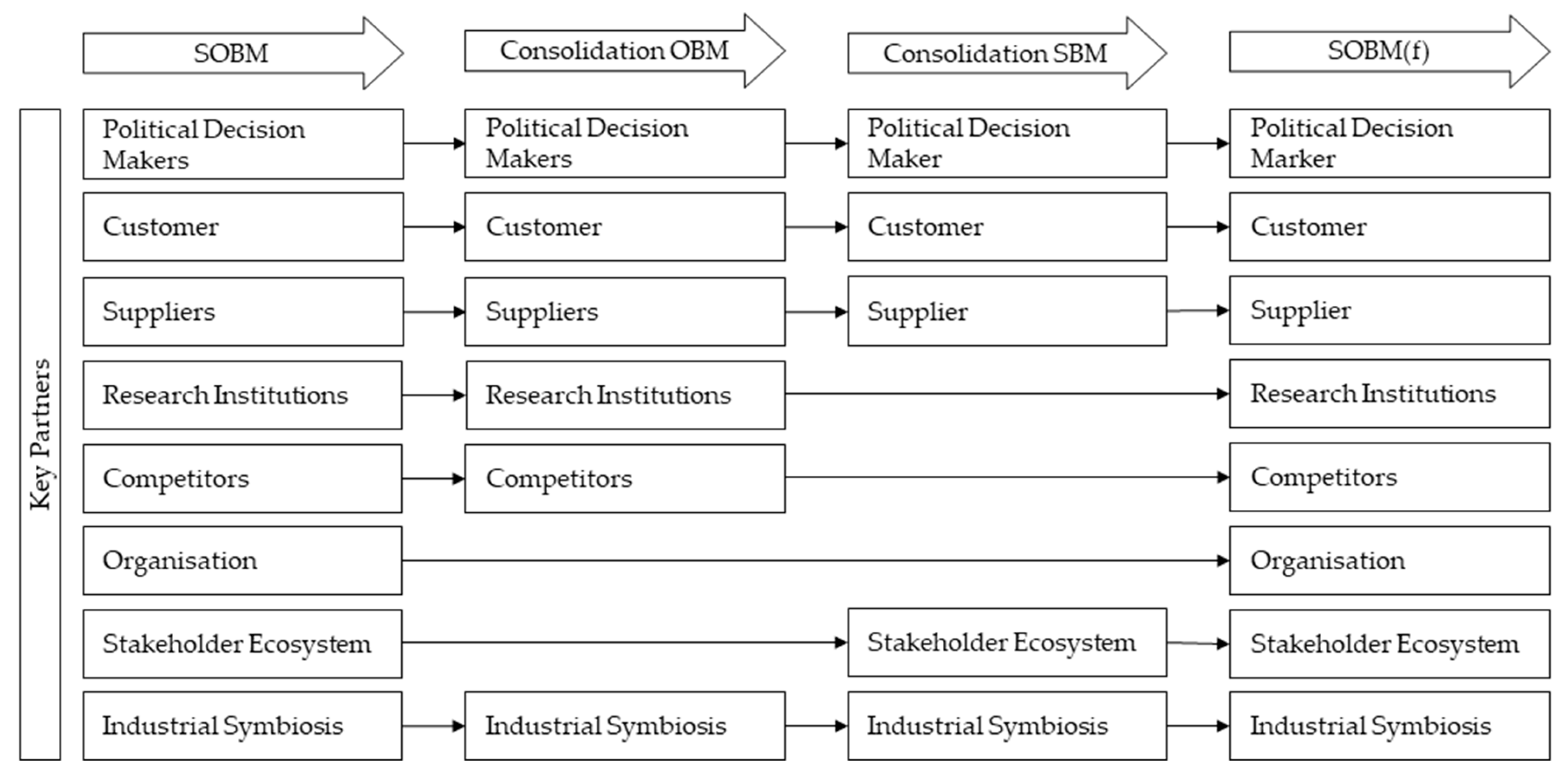

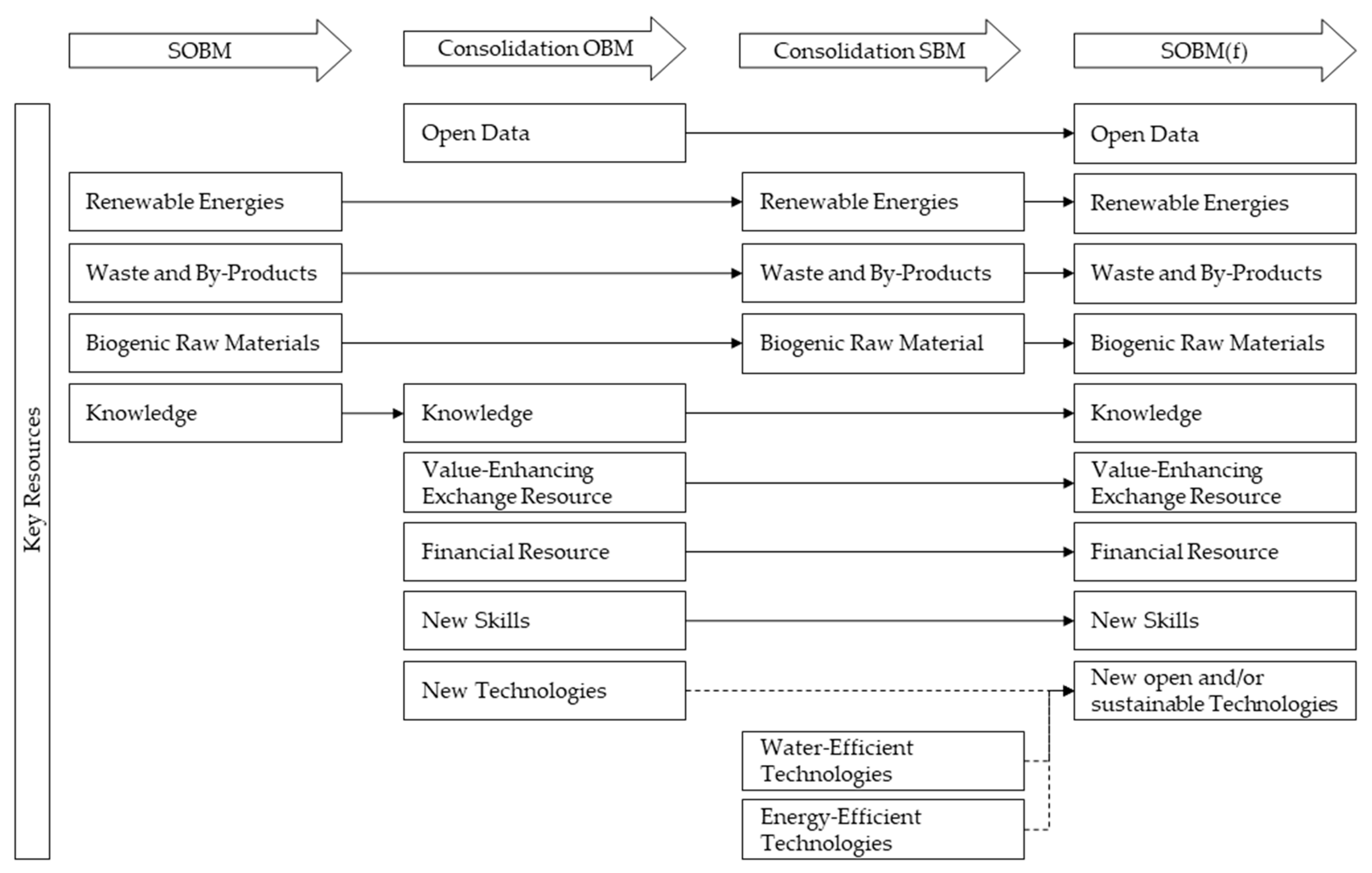

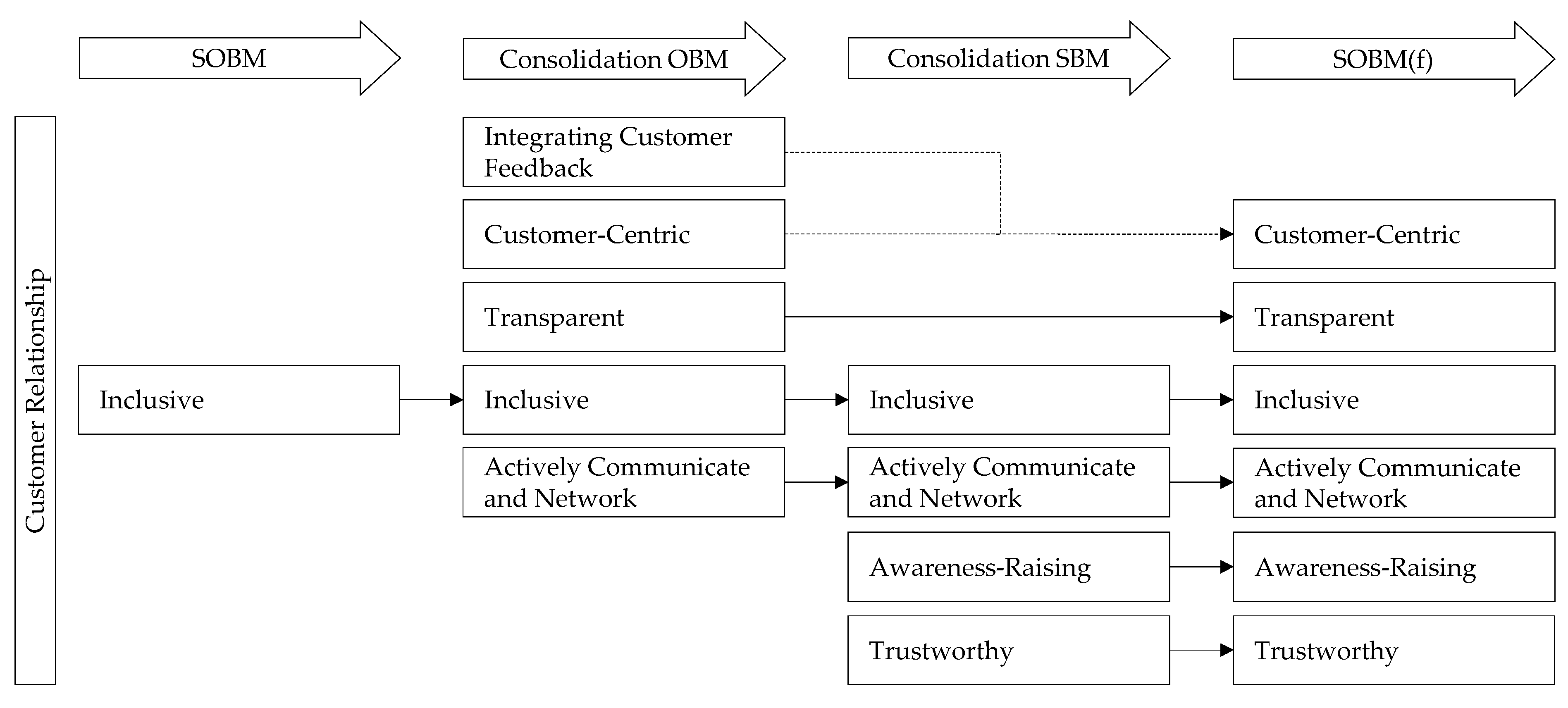
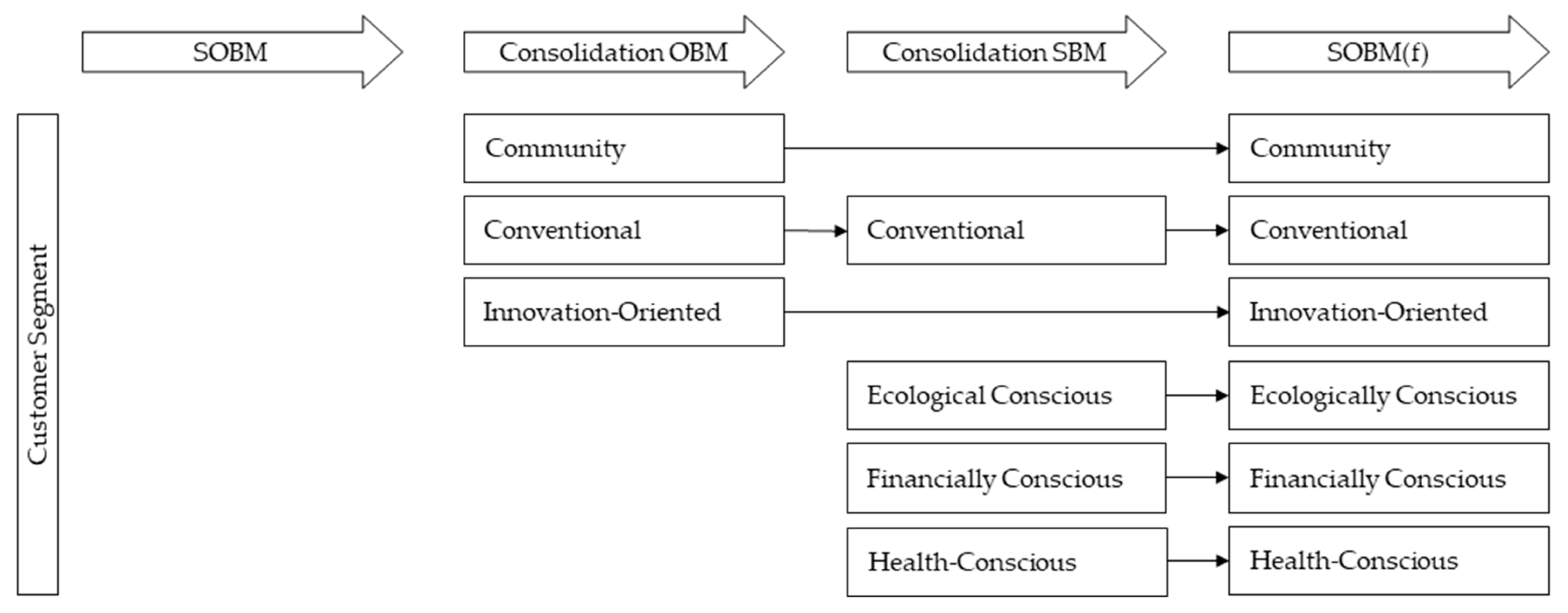
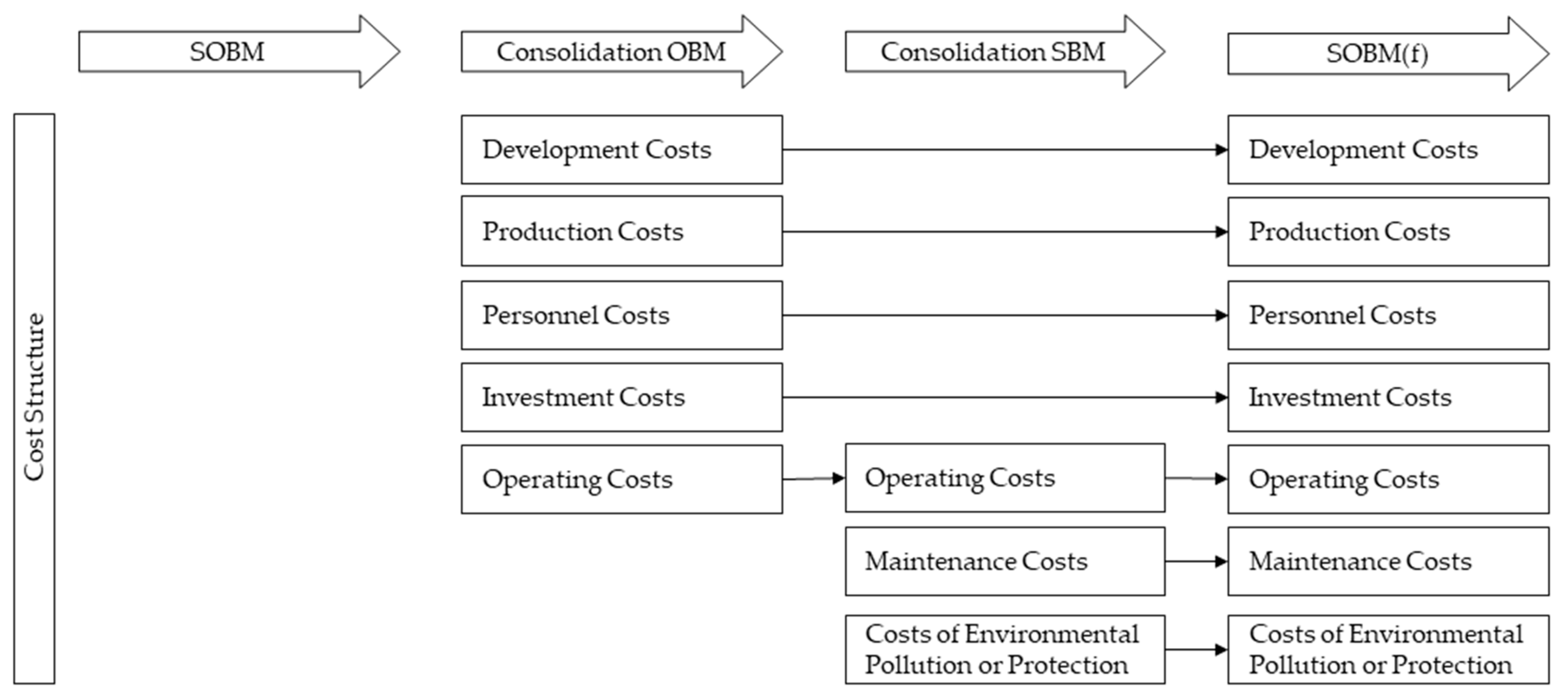
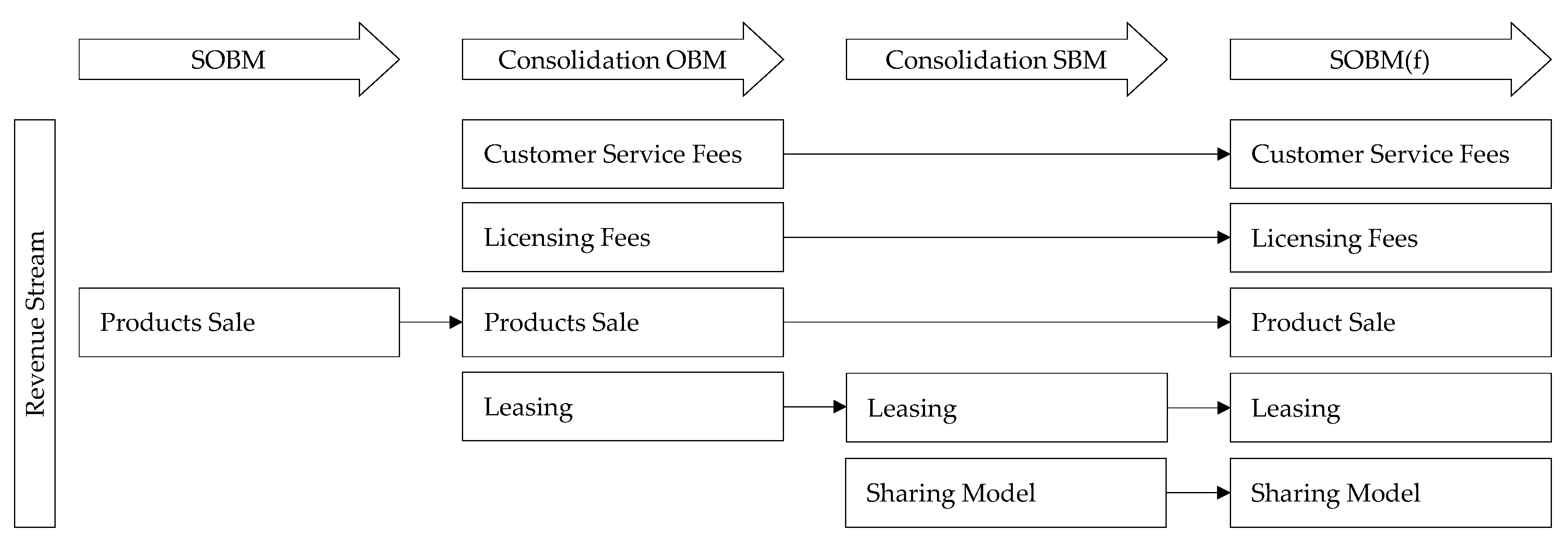
References
- Fernando, L.; Evans, S. Competencies to Move beyond Eco-efficiency. Procedia CIRP 2016, 40, 365–371. [Google Scholar] [CrossRef]
- Medina-Salgado, M.M.; García-Muiña, F.E.; Cucci, M.; Settembre-Blundo, D. Adaptive Life Cycle Costing (LCC) Modeling and Applying to Italy Ceramic Tile Manufacturing Sector: Its Impaction of Open Innovation. J. Open Innov. Technol. Mark. Complex. 2021, 7, 101. [Google Scholar] [CrossRef]
- European Commission. A Clean Planet for All—A European Long-Term Strategic Vision for a Prosperous, Modern, Competitive and Climate Neutral Economy. 2018. Available online: https://eur-lex.europa.eu/legal-content/EN/TXT/?uri=CELEX%3A52018DC0773 (accessed on 10 January 2024).
- Wyns, T.G.; Khandekar, G.A.; Axelson, M.; Sartor, O.; Neuhoff, K. Industrial Transformation 2050—Towards an Industrial Strategy for a Climate Neutral Europe; Institute for European Studies Vrije Universiteit Brussel: Brussel, Belgium, 2019; Available online: https://link.springer.com/content/pdf/10.1007/s10272-019-0848-6.pdf (accessed on 10 January 2024).
- Stubbs, W.; Cocklin, C. Conceptualizing a “Sustainability Business Model”. Organ. Environ. 2008, 21, 103–127. [Google Scholar] [CrossRef]
- Schaltegger, S.; Hansen, E.G.; Lüdeke-Freund, F. Business models for sustainability: Origins, present research, and future avenues. Organ. Environ. 2016, 29, 3–10. [Google Scholar] [CrossRef]
- Bocken, N.M.P.; Geradts, T.H.J. Barriers and drivers to sustainable business model innovation: Organization design and dynamic capabilities. Long Range Plan. 2020, 53, 101950. [Google Scholar] [CrossRef]
- Trimi, S.; Berbegal-Mirabent, J. Business model innovation in entrepreneurship. Int. Entrep. Manag. J. 2012, 8, 449–465. [Google Scholar] [CrossRef]
- Chesbrough, H.W.; Appleyard, M.M. Open innovation and strategy. Calif. Manag. Rev. 2007, 50, 57–76. [Google Scholar] [CrossRef]
- Bocken, N.; Short, S.; Rana, P.; Evans, S. A literature and practice review to develop sustainable business model archetypes. J. Clean. Prod. 2014, 65, 42–56. [Google Scholar] [CrossRef]
- Lüdeke-Freund, F.; Carroux, S.; Joyce, A.; Massa, L.; Breuer, H. The sustainable business model pattern taxonomy—45 patterns to support sustainability-oriented business model innovation. Sustain. Prod. Consum. 2018, 15, 145–162. [Google Scholar] [CrossRef]
- Wyns, T.; Axelson, M. Decarbonising Europe’s Energy Intensive Industries: The Final Frontier; Institute for European Studies Vrije Universiteit Brussel: Brussel, Belgium, 2016; Available online: https://carbonmarketwatch.org/wp/wp-content/uploads/2016/05/Final-Frontier-Innovation-Report-Web-Version.pdf (accessed on 30 November 2023).
- Kim, S.; Bowen, M.; Wen, X. The ultimate co-creation: Leveraging customer in business model innovation. AMS Rev. 2019, 9, 339–356. [Google Scholar] [CrossRef]
- Engwall, M.; Kaulio, M.; Karakaya, E.; Miterev, M.; Berlin, D. Experimental networks for business model innovation: A way for incumbents to navigate sustainability transitions? Technovation 2021, 108, 102330. [Google Scholar] [CrossRef]
- Pedersen, E.R.; Lüdeke-Freund, F.; Henriques, I.; Seitanidi, M.M. Toward collaborative cross-sector business models for sustainability. Bus. Soc. 2021, 60, 1039–1058. [Google Scholar] [CrossRef]
- Abramowicz, W.; Alt, R.; Franczyk, B. Business Information Systems: 19th International Conference, BIS 2016, Leipzig, Germany, July, 6–8, 2016, Proceedings, 1st ed.; Springer: Cham, Switzerland, 2016; p. 302. [Google Scholar] [CrossRef]
- Mei, L.; Zhang, T.; Chen, J. Exploring the effects of inter-firm linkages on SMEs’ open innovation from an ecosystem perspective: An empirical study of Chinese manufacturing SMEs. Technol. Forecast. Soc. Chang. 2019, 144, 118–128. [Google Scholar] [CrossRef]
- Berglund, H.; Sandström, C. Business model innovation from an open systems perspective: Structural challenges and managerial solutions. Int. J. Prod. Dev. 2013, 18, 274–285. [Google Scholar] [CrossRef]
- Tsutsui, Y.; Yamada, N.; Mitake, Y.; Sholihah, M.A.; Shimomura, Y. A strategic design guideline for open business models. Int. J. Autom. Technol. 2020, 14, 678–689. [Google Scholar] [CrossRef]
- Storbacka, K.; Frow, P.; Nenonen, S.; Payne, A. Designing Business Models for Value Co-Creation. In Special Issue—Toward a Better Understanding of the Role of Value in Markets and Marketing (Review of Marketing Research, Volume 9); Vargo, S.L., Lusch, R.F., Eds.; Emerald Group Publishing Limited: Leeds, UK, 2012; pp. 51–78. [Google Scholar] [CrossRef]
- Djelassi, S.; Decoopman, I. Customers’ participation in product development through crowdsourcing: Issues and implications. Ind. Mark. Manag. 2013, 42, 683–692. [Google Scholar] [CrossRef]
- Kimpimäki, J.-P.; Malacina, I.; Lähdeaho, O. Open and sustainable: An emerging frontier in innovation management? Technol. Forecast. Soc. Chang. 2022, 174, 121229. [Google Scholar] [CrossRef]
- Bogers, M.; Chesbrough, H.; Strand, R. Sustainable open innovation to address a grand challenge: Lessons from Carlsberg and the Green Fiber Bottle. Br. Food J. 2020, 122, 1505–1517. [Google Scholar] [CrossRef]
- Yun, J.J.; Liu, Z. Micro- and Marco-Dynamics of Open Innovation with a Quadruple-Helix Model. Sustainability 2019, 11, 3301. [Google Scholar] [CrossRef]
- Thomas, L.; Samuel, K. Characteristics of open source business models. In ISPIM Innovation Symposium; The International Society for Professional Innovation Management (ISPIM): Vienna, Austria, 2017; p. 1. [Google Scholar]
- Minatogawa, V.; Franco, M.; Rampasso, I.S.; Holgado, M.; Garrido, D.; Pinto, H.; Quadros, R. Towards Systematic Sustainable Business Model Innovation: What Can We Learn from Business Model Innovation. Sustainability 2022, 14, 2939. [Google Scholar] [CrossRef]
- Yaghmaie, P.; Vanhaverbeke, W. Identifying and describing constituents of innovation ecosystems: A systematic review of the literature. EuroMed J. Bus. 2020, 15, 283–314. [Google Scholar] [CrossRef]
- Weiblen, T. The open business model: Understanding an emerging concept. J. Multi Bus. Model Innov. Technol. 2016, 2, 35–66. [Google Scholar] [CrossRef]
- Yun, J.J. Business Model Design Compass: Open Innovation Funnel to Schumpeterian New Combination Business Model Developing Circle, 1st ed.; Springer: Singapore, 2017. [Google Scholar] [CrossRef]
- Rauter, R.; Globocnik, D.; Perl-Vorbach, E.; Baumgartner, R.J. Open Innovation and its effects on economic and sustainability innovation performance. J. Innov. Knowl. 2019, 4, 226–233. [Google Scholar] [CrossRef]
- Peñarroya-Farell, M.; Miralles, F.; Vaziri, M. Open and sustainable business model innovation: An intention-based perspective from Spanish cultural firms. J. Open Innov. Technol. Mark. Complex. 2023, 9, 100036. [Google Scholar] [CrossRef]
- Brenner, B.; Drdla, D. Business Model Innovation toward Sustainability and Circularity—A Systematic Review of Innovation Types. Sustainability 2023, 15, 11625. [Google Scholar] [CrossRef]
- Benyayer, L.-D.; Kupp, M. Responding to open business models. J. Bus. Strategy 2017, 38, 33–40. [Google Scholar] [CrossRef]
- Holm, A.B.; Günzel, F.; Ulhøi, J.P. Openess in innovation and business models: Lessons from the newspaper industry. Int. J. Technol. Manag. 2013, 61, 324–348. [Google Scholar] [CrossRef]
- Bocken, N. Sustainable Models. In Decent Work and Economic Growth. Encyclopaedia of the UN Sustainable Development Goals; Leal Filho, W., Azul, A.M., Brandli, L., Lange Salvia, A., Wall, T., Eds.; Springer: Cham, Switzerland, 2021. [Google Scholar] [CrossRef]
- Parida, V.; Sjödin, D.; Reim, W. Reviewing literature on digitalization, business model innovation, and sustainable industry: Past achievements and future promises. Sustainability 2019, 11, 391. [Google Scholar] [CrossRef]
- Moher, D.; Liberati, A.; Tetzlaff, J.; Altman, D.G.; PRISMA Group. Preferred Reporting Items for Systematic Review and Meta-Analyses: The PRISMA Statement. Ann. Intern. Med. 2009, 151, 264–269. [Google Scholar] [CrossRef]
- Ziegler, A.; Antes, G.; König, I. Bevorzugte Report Items für systematische Übersichten und Meta-Analysen: Das PRISMA-Statement. DMW—Dtsch. Med. Wochenschr. 2011, 136, e9–e15. [Google Scholar] [CrossRef]
- Bailey, K.D. Typologies and Taxonomies: An Introduction to Classification Techniques; Sage Publications: Thousand Oaks, CA, USA, 1994. [Google Scholar]
- Möller, F.; Haße, H.; Azkan, C.; van der Valk, H.; Otto, B. Design of goal-oriented artifcats from morphological taxonomies: Progression from descriptive to prescriptive design knowledge. Proceeding of the 16th International Conference on Wirtschaftsinformatik, Essen, Germany, 9 March 2021. [Google Scholar]
- Glass, R.L.; Vessey, I. Contemporary Application-Domain Taxonomies. IEEE Softw. 1995, 12, 63–76. [Google Scholar] [CrossRef]
- Nickerson, R.; Varshney, U.; Muntermann, J. A method for taxonomy development and its application in information systems. Eur. J. Inf. Syst. 2013, 22, 336–359. [Google Scholar] [CrossRef]
- Szopinski, D.; Schoormann, T.; Kundisch, D. Because your taxonomy is worth it: Towards a framework for taxonomy evaluation. In Proceedings of the Twenty-Seventh European Conference on Information Systems, Uppsala, Sweden, 8 January–14 June 2019. [Google Scholar]
- Möller, F.; Stachon, M.; Azkan, C.; Schoormann, T.; Otto, B. Designing business model taxonomies—Synthesis and guidance from information systems research. Electron. Mark. 2022, 32, 701–726. [Google Scholar] [CrossRef]
- Richardson, J. The business model: An integrative framework for strategy execution. Strateg. Chang. 2008, 17, 133–144. [Google Scholar] [CrossRef]
- Osterwalder, A.; Pigneur, Y. Business Model Generation: A Handbook for Visionaries, Game Changers, and Challengers, 1st ed.; John Wiley & Sons: Hoboken, NJ, USA, 2010. [Google Scholar]
- Nickerson, R.C.; Muntermann, J.; Varshney, U. Taxonomy Development in Information System: A Literature Survey and Problem Statement. AMCIS 2010 Proc. 2010, 125. Available online: https://aisel.aisnet.org/amcis2010/125 (accessed on 17 April 2024).
- Yu, Y.; Li, Y.; Shen, J.; Feng, H.; Sun, J.; Zhang, C. STEAM: Self-Supervised Taxonomy Expansion with Mini-Paths. In Proceedings of the 26th ACM SIGKDD International Conference on Knowledge Discovery & Data Mining, Virtual Event, 6–10 July 2020; pp. 1026–1035. [Google Scholar] [CrossRef]
- Scott Tindale, R.; Winget, J.R. Group Decision-Making. Oxford Research Encyclopedia of Psychology. 2019. Available online: https://oxfordre.com/psychology/display/10.1093/acrefore/9780190236557.001.0001/acrefore-9780190236557-e-262 (accessed on 17 April 2024).
- Vanhaverbeke, W. The interorganizational Context of Open Innovation. In Open Innovation: Researching a New Paradigm; Chesbrough, H., Vanhaverbeke, W., West, J., Eds.; Oxford Academic: Oxford, UK, 2006; pp. 205–2019. [Google Scholar] [CrossRef]
- Petroni, G.; Venturini, K.; Verbano, C. Open innovation and new issues in R&D organization and personnel management. Int. J. Hum. Resour. Manag. 2012, 23, 147–173. [Google Scholar] [CrossRef]
- Gassemann, O.; Enkel, E. Towards a Theory of Open Innovation: Three Core Process Archetypes. In Proceedings of the R&D Management Conference (RADMA) 2004, Lisbon, Portugal, 7 July 2004; Available online: https://www.alexandria.unisg.ch/handle/20.500.14171/67618 (accessed on 13 December 2023).
- Saebi, T.; Foss, N.J. Business models for open innovation: Matching heterogeneous open innovation strategies with business model dimension. Eur. Manag. J. 2015, 33, 201–2013. [Google Scholar] [CrossRef]
- Asswad, J.; Hake, G.; Gómez, J.M. Overcoming the Barriers of Sustainable Business Model Innovations by Integrating Open Innovation. In Business Information System, 1st ed.; Abramowicz, W., Alt, R., Franczyk, B., Eds.; Springer: Cham, Switzerland, 2016; Volume 255, pp. 302–314. [Google Scholar] [CrossRef]
- Jacob, A.; Teuteberg, F. Towards a taxonomy for design options of social networking technologies in sustainable business models. Sustainability 2020, 13, 81. [Google Scholar] [CrossRef]
- Van Delft, S.; Zhao, Y. Business models in process industries: Emerging trends and future research. Technovation 2021, 105, 102195. [Google Scholar] [CrossRef]
- Sagar, A.D.; Frosch, R.A. A perspective on industrial ecology and its application to a metals-industry ecosystem. J. Clean. Prod. 1997, 5, 39–45. [Google Scholar] [CrossRef]
- Tsvetkova, A.; Gustafsson, M. Business models for industrial ecosystems: A modular approach. J. Clean. Prod. 2012, 29–30, 246–254. [Google Scholar] [CrossRef]
- Arnold, M. Fostering sustainability by linking co-creation and relationship management concepts. J. Clean. Prod. 2017, 140, 179–188. [Google Scholar] [CrossRef]
- Pichlak, M.; Szromek, A.R. Eco-Innovation, Sustainability and Business Model Innovation by Open Innovation Dynamics. J. Open Innov. Technol. Mark. Complex. 2021, 7, 149. [Google Scholar] [CrossRef]
- Adobor, H. Opening up strategy formulation: Benefits, risks, and some suggestions. Bus. Horiz. 2019, 62, 383–393. [Google Scholar] [CrossRef]
- Trevisan, A.H.; Zacharias, I.S.; Castro, C.G.; Mascarenhas, J. Circular economy actions in business ecosystems driven by digital technologies. Procedia CIRP 2021, 100, 325–330. [Google Scholar] [CrossRef]
- Kortmann, S.; Piller, F. Open Business Models and Closed-Loop Value Chains: Redefining the Firm-Consumer Relationship. Calif. Manag. Rev. 2016, 58, 88–108. [Google Scholar] [CrossRef]
- Cappa, F.; Del Sette, F.; Hyes, D.; Rosso, F. How to Deliver Open Sustainable Innovation: An Integrated Approach for a Sustainable Marketable Product. Sustainability 2016, 8, 1341. [Google Scholar] [CrossRef]
- Bansal, P. Evolving sustainably: A longitudinal study of corporate sustainable development. Strateg. Manag. J. 2005, 26, 197–218. [Google Scholar] [CrossRef]
- Naja, T. Antecedents to open business model in the ICT-based sectors. J. High Technol. Manag. Res. 2020, 31, 100388. [Google Scholar] [CrossRef]
- Hu, D.; Wang, Y.; Li, Y. How does open innovation modify the relationship between environmental regulations and productivity? Bus. Strategy Environ. 2017, 26, 1132–1143. [Google Scholar] [CrossRef]
- Romero, M.C.; Lara, P.; Villablobos, J. Evolution of the business model: Arriving at open business model dynamics. J. Open Innov. Technol. Mark. Complex. 2021, 7, 86. [Google Scholar] [CrossRef]
- Albats, E.; Podmetina, D.; Vanhaverbeke, W. Open innovation in SMEs: A process view towards business model innovation. J. Small Bus. Manag. 2023, 61, 2519–2560. [Google Scholar] [CrossRef]
- Huan, G.; Wen-song, Z. Research on coupling intellectual property and open business model. In Proceedings of the 2013 International Conference on Management Science and Engineering 20th Annual Conference Proceedings, Harbin, China, 17–19 July 2013. [Google Scholar] [CrossRef]
- Ghisetti, C.; Marzucchi, A.; Montresor, S. The open eco-innovation mode. An empirical investigation of eleven European countries. Res. Policy 2015, 44, 1080–1093. [Google Scholar] [CrossRef]
- Frankenberger, K.; Weiblen, T.; Gassmann, O. The antecedents of open business models: An exploratory study of incumbent firms. RD Manag. 2014, 44, 173–188. [Google Scholar] [CrossRef]
- Romero, D.; Molina, A. Collaborative networked organisations and customers communities: Value co-creation and co-innovation in the networking era. Prod. Plan. Control 2011, 22, 447–472. [Google Scholar] [CrossRef]
- Siaw, C.A.; Sarpong, D. Dynamic exchange capabilitites for value co-creation in ecosystems. J. Bus. Res. 2021, 134, 493–506. [Google Scholar] [CrossRef]
- Garmann-Johnsen, N.F.; Olsen, D.H.; Eikebrokk, T.R. The Co-creation Canvas. Procedia Comput. Sci. 2021, 181, 189–197. [Google Scholar] [CrossRef]
- Chesbrough, H. Business model innovations: It’s not just about technology anymore. Strategy Leadersh. 2007, 35, 12–17. [Google Scholar] [CrossRef]
- Brodny, J.; Tutak, M. The Use of Open Innovation Concept to Develop a Method to Improve Safety during the Mining Production Process: A Case Study of the Integration of University and Industry. J. Open Innov. Technol. Mark. Complex. 2022, 8, 75. [Google Scholar] [CrossRef]
- Cobben, D.; Ooms, W.; Roijakkers, N.; Radziwon, A. Ecosystem types: A systematic review on boundaries and goals. J. Bus. Res. 2022, 142, 138–164. [Google Scholar] [CrossRef]
- Konietzko, J.; Bocken, N.; Hultink, E.J. Circular ecosystem innovation: An initial set of principles. J. Clean. Prod. 2020, 253, 119942. [Google Scholar] [CrossRef]
- Frankenberger, K.; Weiblen, T.; Gassmann, O. Networking configuration, customer centricity, and performance of open business models: A solution provider perspective. Ind. Mark. Manag. 2013, 42, 671–682. [Google Scholar] [CrossRef]
- Paulus-Rohmer, D.; Schatton, H.; Bauernhansel, T. Ecosystems, Strategy and Business Models in the age of Digitization—How the Manufacturing Industry is Going to Change its Logic. Procedia CIRP 2016, 57, 8–13. [Google Scholar] [CrossRef]
- Lindahl, M.; Sakao, T.; Öhrwall Rönnbäc, A. Business Implications of Integrated Product and Service Offerings. In Proceedings of the 1st CIRP Industrial Product-Service Systems (IPS2) Conference, Cranfield, UK, 1–2 April 2009. [Google Scholar]
- Estelami, H. A cross-category examniation of consumer price awarness in financial and non-financial services. J. Financ. Serv. Mark. 2005, 10, 125–139. [Google Scholar] [CrossRef]
- Burr, W.; Herstatt, C.; Marquardt, G.; Walch, S. Lizensierung als Einstrittsstrategie in internationale Märkte. In Fallstudien zum internationalen Management; Zentes, J., Swoboda, B., Eds.; Gabler Verlag, Springer: Wiesbaden, Germany, 2004; pp. 325–338. [Google Scholar] [CrossRef]
- Ohl, C.; Moser, F. Chemical Leasing Business Model—A Contribution to the Effective Risk Management of Chemical Substances. Risk Anal. 2007, 27, 999–1007. [Google Scholar] [CrossRef]
- Ritchey, T. General morphological analysis: A general method from non-quantified modelling. In Proceedings of the 16th Euro Conference on Operational Analysis, Brussels, Belgium, 1 July 1998. [Google Scholar]
- Neto, A.C.; Guimarães, M.J.O.C.; Freire, E. Business models for commercial scale second-generation bioethanol production. J. Clean. Prod. 2018, 184, 168–178. [Google Scholar] [CrossRef]
- GranBio. About Us. 2015. Available online: https://www.granbio.com.br/en/ (accessed on 24 November 2023).
- D’Amato, D.; Veijonaho, S.; Toppinen, A. Towards sustainability? Forest-based circular bioeconomy business models in Finnish SMEs. For. Policy Econ. 2020, 110, 101848. [Google Scholar] [CrossRef]
- Itp. Our responsible Growth. 2024. Available online: https://www.itp.company/en/sustainability/ (accessed on 1 April 2024).

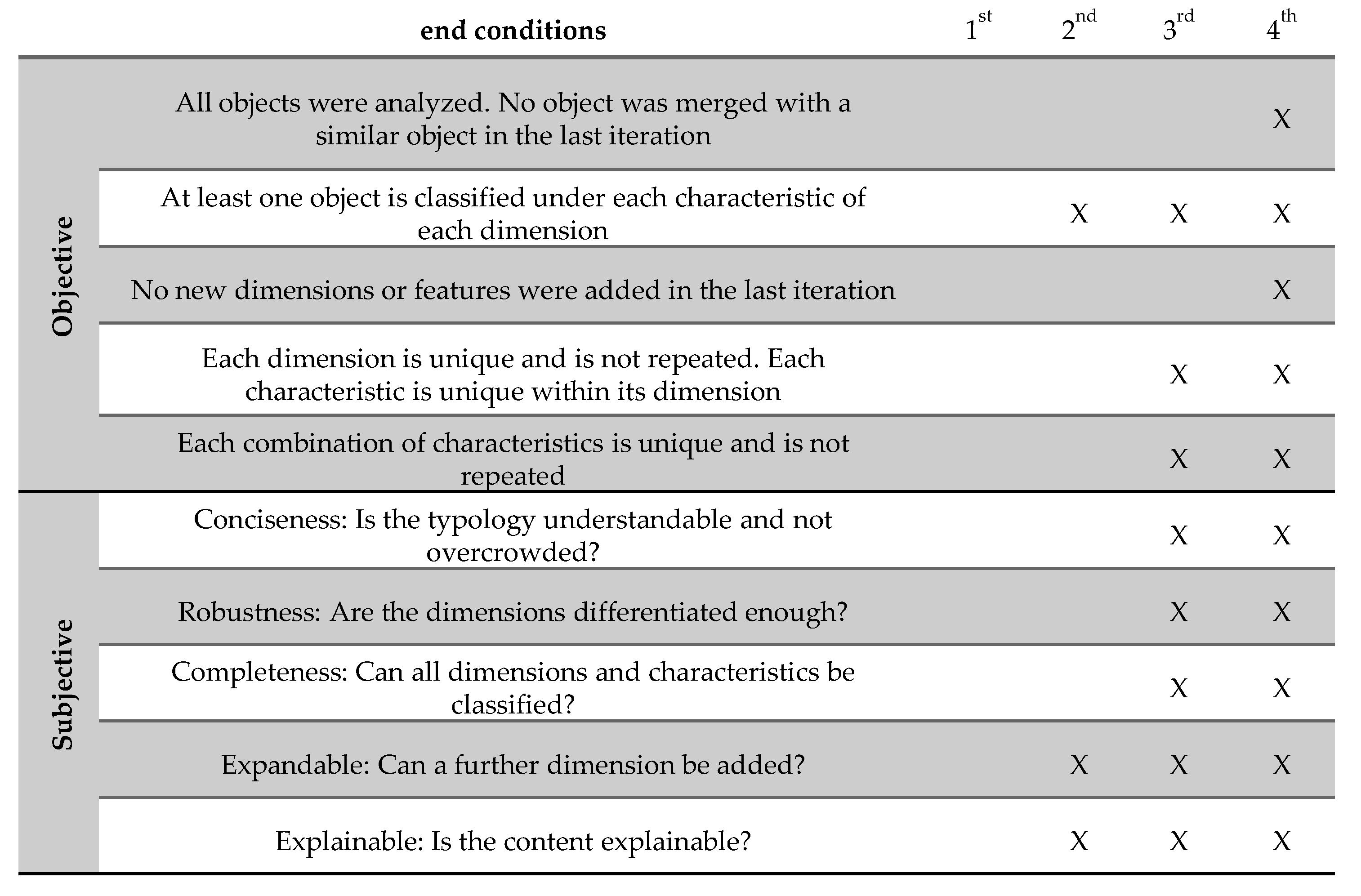
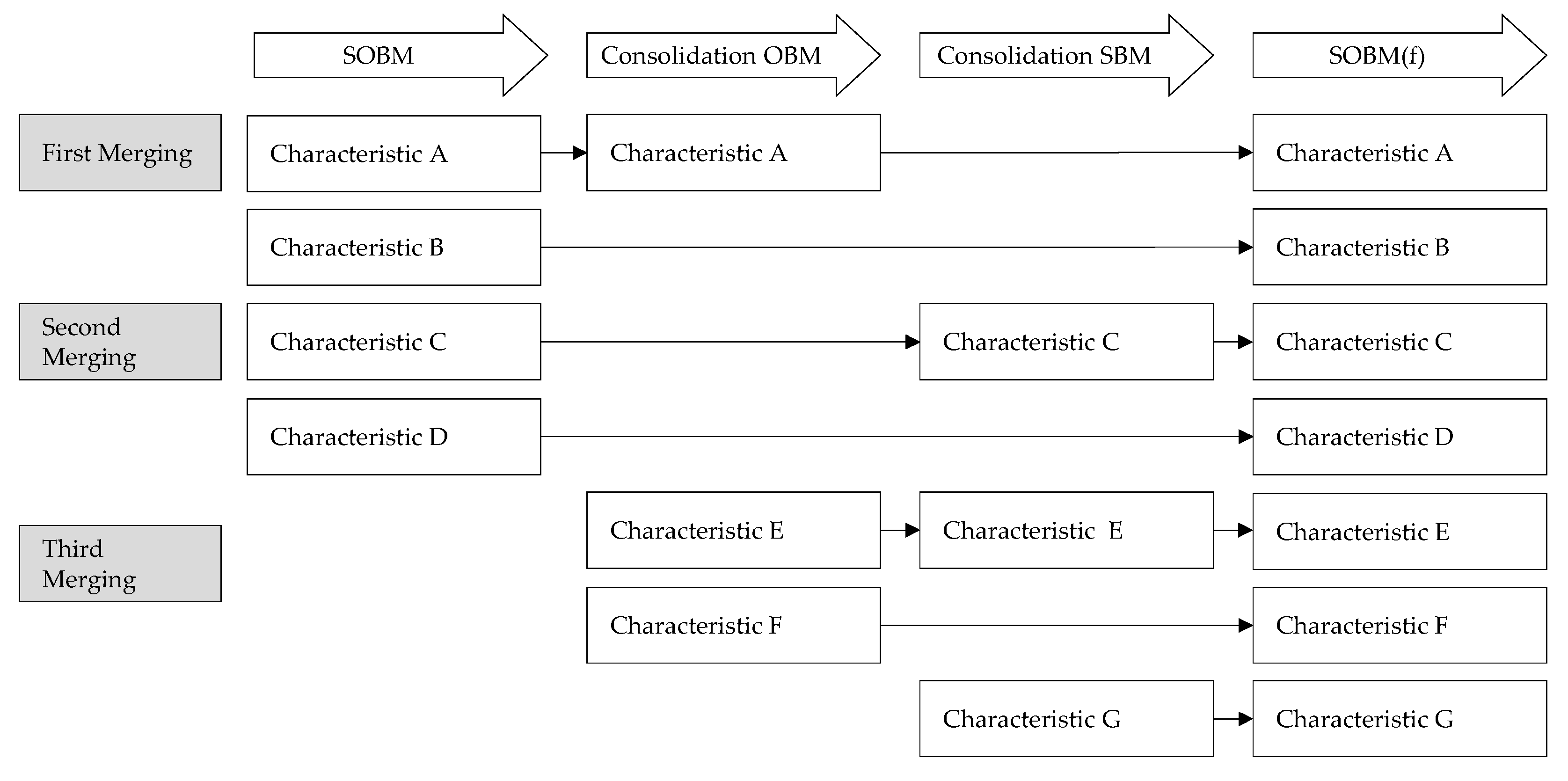

| Search String | Database | Results | Included |
|---|---|---|---|
| TITLE-ABS-KEY((“open business model”) OR (“industry ecosystem”)) AND (“innovat*” AND “sustain*”) | Scopus | 29 | 6 |
| IEEE Xplore | 10 | 1 | |
| EBSCOhost | 47 | 10 | |
| ScienceDirect | 374 | 27 | |
| ((“open business model”) OR (“industry ecosystem”)) AND (“innovation” AND “sustainability”) | SpringerLink | 114 | 4 |
| Final Sample (no duplicates, filtering, forward backward search) | ∑ = 81 | ||
| Iteration | Approach | Sample per Iteration | Explanation |
|---|---|---|---|
| 1 | Conceptual-to-Empirical | 20 | The literature already contains knowledge about business models in general and about sustainable and open business models. For this reason, it is appropriate to first incorporate the conceptual knowledge from the underlying literature in order to achieve both a high degree of rigor and sufficient reference to theory. |
| 2 | Conceptual-to-Empirical | 20 | |
| 3 | Conceptual-to-Empirical | 20 | Further iteration was aimed at recognizing relevant characteristics. The in-depth investigation of possible design options fulfils the requirements for conciseness and completeness. |
| 4 | Empirical-to-Conceptual | 21 | An empirical-to-conceptual iteration is necessary to test the finding from the 3rd iteration and refine dimensions and characteristics. |
Disclaimer/Publisher’s Note: The statements, opinions and data contained in all publications are solely those of the individual author(s) and contributor(s) and not of MDPI and/or the editor(s). MDPI and/or the editor(s) disclaim responsibility for any injury to people or property resulting from any ideas, methods, instructions or products referred to in the content. |
© 2024 by the authors. Licensee MDPI, Basel, Switzerland. This article is an open access article distributed under the terms and conditions of the Creative Commons Attribution (CC BY) license (https://creativecommons.org/licenses/by/4.0/).
Share and Cite
Mais, F.; Bauernhansl, T. Design Options for Sustainable and Open Business Models: A Taxonomy-Based Analysis. Sustainability 2024, 16, 4790. https://doi.org/10.3390/su16114790
Mais F, Bauernhansl T. Design Options for Sustainable and Open Business Models: A Taxonomy-Based Analysis. Sustainability. 2024; 16(11):4790. https://doi.org/10.3390/su16114790
Chicago/Turabian StyleMais, Franziska, and Thomas Bauernhansl. 2024. "Design Options for Sustainable and Open Business Models: A Taxonomy-Based Analysis" Sustainability 16, no. 11: 4790. https://doi.org/10.3390/su16114790
APA StyleMais, F., & Bauernhansl, T. (2024). Design Options for Sustainable and Open Business Models: A Taxonomy-Based Analysis. Sustainability, 16(11), 4790. https://doi.org/10.3390/su16114790







